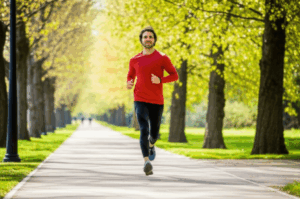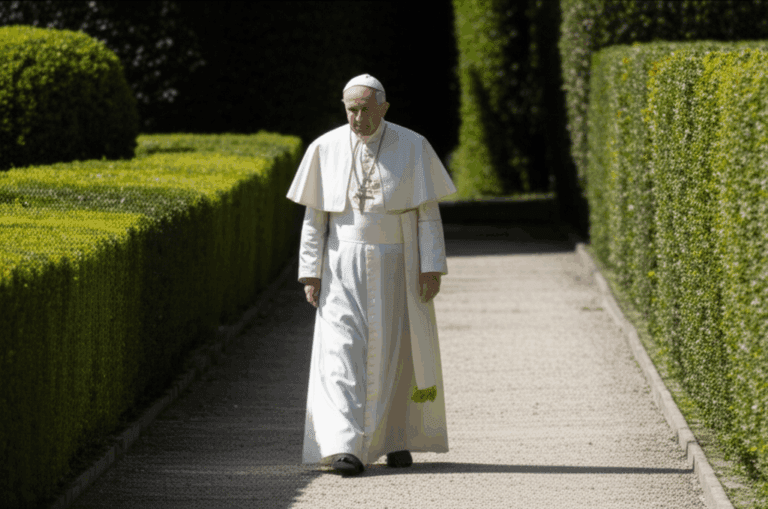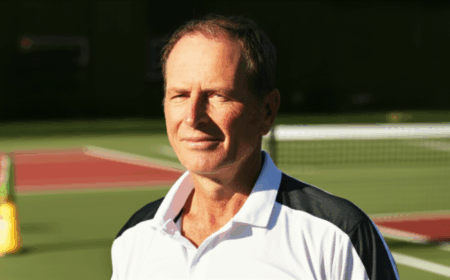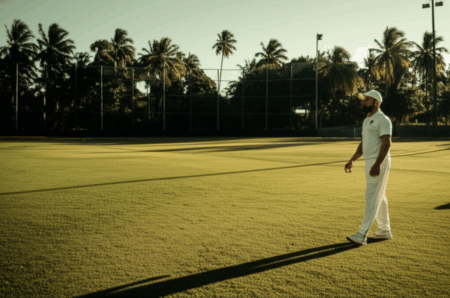Pope Leo XIV’s recent election has sparked curiosity about the man leading the Catholic Church. Beyond his spiritual leadership, the 69-year-old pontiff has garnered attention for his dedication to physical fitness. This article delves into Pope Leo XIV’s workout routine, exploring its components, motivations, and significance within his broader role.
From Cardinal Robert Prevost to Pope Leo XIV: A Life of Service and Fitness
Before ascending to the papacy, Cardinal Robert Francis Prevost maintained a consistent workout routine. His commitment to health and discipline was evident to those who knew him, even before he became a global figure. Following the passing of Pope Francis, the papal conclave elected Cardinal Prevost as Pope Leo XIV, ushering in a new era for the Catholic Church.
The Shocked Trainer: Discovering “Robert” Was the Pope
Valerio Masella, a 26-year-old personal trainer at Omega Gym near the Vatican, experienced a moment of astonishment when he recognized his client, “Robert,” on television as the newly elected Pope Leo XIV. Masella, in an interview with Il Messaggero, revealed that the then-Cardinal Prevost trained two to three times a week, typically in the mornings.
Masella stated, “I recognized him immediately when I saw him on television. To me, he was simply a client—reserved, polite, and in excellent physical condition.” He added that “Robert” never disclosed his clerical identity during their sessions, leading Masella to believe he was “a professor or an academic.”
A Discreet Approach to Fitness
Pope Leo XIV, during his time as Cardinal Prevost, maintained a low profile at the gym. He wore informal clothes, avoided unnecessary conversation, and focused on his training. Masella described him as discreet and kind, noting that he “spoke very little, but always with kindness.” This quiet dedication to fitness offers a glimpse into the personal habits of a man now leading over a billion Catholics worldwide.
Inside Pope Leo XIV’s Workout Routine
Pope Leo XIV’s fitness regimen, designed to maintain a balanced body composition and relieve physical stress, comprised three key components:
1. Aerobic Warm-up: Cardio for Endurance and Circulation
Each training session commenced with a cardio warm-up. Pope Leo XIV favored either a brisk walk on the treadmill or an intense ride on a stationary bike. According to Masella, his preferred treadmill faced a mural showcasing iconic Roman landmarks, including St. Peter’s Basilica. This warm-up served to improve endurance, boost circulation, and prepare his body for the subsequent strength work.
Brisk walking, a component of his cardio routine, offers numerous benefits, including weight maintenance, improved cardiovascular health, increased energy levels, and stress reduction.
2. Muscle Strengthening and Postural Training: Building Strength and Stability
Following the cardio, Pope Leo XIV concentrated on strength and stability exercises. He utilized resistance bands, dumbbells, and bodyweight exercises, targeting core, back, and shoulder muscles – key muscle groups essential for posture and mobility.
Masella noted, “For his age, he stands out for his resistance and healthy body composition. He was in excellent physical shape.” The workouts were adjusted based on potential strain, common in desk-bound jobs, ensuring a balanced approach to fitness.
3. Tennis: A Lifelong Passion
Beyond regular gym sessions, Pope Leo XIV has a passion for tennis. He views the sport as both a physical exercise and a way to cultivate patience and focus. He has described himself as an amateur tennis player. In a recent meeting with Italian tennis player Jannik Sinner, Pope Leo XIV admitted he wouldn’t want to face a match with the world number one.
The Significance of Fitness for a Modern Pope
Pope Leo XIV’s dedication to fitness is more than just a personal preference; it is a reflection of the importance of physical well-being for a demanding role. As the leader of the Catholic Church, the Pope faces numerous physical, mental, and emotional challenges.
Physical Demands of the Papacy
The papacy involves constant movement, meetings with dignitaries, and the celebration of Mass. Pope Leo XIV is on his feet for extended periods, leading a global church that demands both physical and mental stamina. A basic, effective fitness routine can help him meet these demands.
Mental and Spiritual Benefits
Maintaining physical fitness contributes to mental clarity and sharpness, essential for decision-making and leadership. Exercise and physical activity have been linked to improved cognitive function and reduced stress, enabling Pope Leo XIV to handle the pressures of his position with greater resilience.
A Role Model for a Healthy Lifestyle
Pope Leo XIV’s commitment to fitness serves as an example for people worldwide, promoting the importance of leading a healthy lifestyle. Alessandro Tamburlani, President of Omega Fitness Club, noted, “He’s a small beacon that shows us all: if he can do it, we can all take care of ourselves and exercise.”
Pope Leo XIV and the Jubilee of Sport
Pope Leo XIV has also emphasized the relationship between faith and sport. He presided over the Jubilee of Sport, a multi-day event held in Vatican City, highlighting a Mass in St. Peter’s Basilica. During this event, he drew parallels between the Holy Trinity and athletic endeavors, emphasizing God’s dynamic love as a means for human connection.
Connecting Faith and Athletics
In his homily, Pope Leo XIV connected the dynamic nature of the Holy Trinity with the virtues fostered by sports. He described God as “activity, communion, a dynamic relationship,” suggesting that sports can lead to an encounter with the Triune God by challenging individuals to relate to others both outwardly and inwardly.
Promoting Unity and Hope
Pope Leo XIV emphasized that sports offer valuable lessons in a world often marked by solitude and division. He highlighted the importance of teamwork, cooperation, and sharing, especially in team sports, as antidotes to radical individualism. In an increasingly digital society, sports offer a concrete way to connect with others, promoting a healthier sense of the body and real-time interaction.
The Broader Message: Fitness as a Tool for Self-Mastery
Chase Crouse, co-founder of Hypuro Fit, an online fitness program designed to help Catholics grow in health, holiness, and self-mastery, discussed the connection between the Catholic faith and fitness. He noted that Pope John Paul II’s theology of the body emphasizes the “law of gift,” suggesting that one cannot give what one does not have. Exercise and nutritional discipline can be tools for self-mastery, enabling individuals to give more fully of themselves.
Continuing a Legacy of Active Popes
Pope Leo XIV isn’t the first pope to embrace physical activity. Pope John Paul II famously had a swimming pool installed at Castel Gandolfo. Pope Leo XIV’s active lifestyle aligns with this tradition, demonstrating that physical fitness can be integrated into a life of spiritual leadership.
Practical Tips Inspired by Pope Leo XIV’s Routine
Inspired by Pope Leo XIV’s commitment to fitness, here are some practical tips for incorporating exercise into your daily routine:
- Start with Cardio: Begin your workouts with a brisk walk, jog, or bike ride to improve cardiovascular health and prepare your body for more intense exercise.
- Incorporate Strength Training: Use resistance bands, dumbbells, or bodyweight exercises to build strength and stability, focusing on core, back, and shoulder muscles.
- Find an Enjoyable Activity: Choose a sport or activity that you find enjoyable, such as tennis, swimming, or hiking, to make exercise a sustainable part of your lifestyle.
- Stay Consistent: Aim for regular workouts, even if they are short, to maintain a balanced body composition and relieve physical stress.
- Balance Physical and Mental Well-being: Recognize the connection between physical fitness and mental clarity, and prioritize both in your daily life.
- Embrace Teamwork and Community: Participate in team sports or group fitness classes to foster a sense of community and cooperation.
- Promote a Healthy Lifestyle: Encourage others to prioritize their health and well-being through regular exercise and balanced nutrition.
Conclusion: A Holistic Approach to Leadership
Pope Leo XIV’s dedication to fitness underscores a holistic approach to leadership, recognizing the importance of physical, mental, and spiritual well-being. His workout routine and active lifestyle serve as an inspiration, encouraging individuals to prioritize their health and find ways to integrate exercise into their daily lives. By connecting faith and athletics, Pope Leo XIV promotes a message of unity, hope, and self-mastery, demonstrating that a healthy body can support a healthy mind and spirit.







